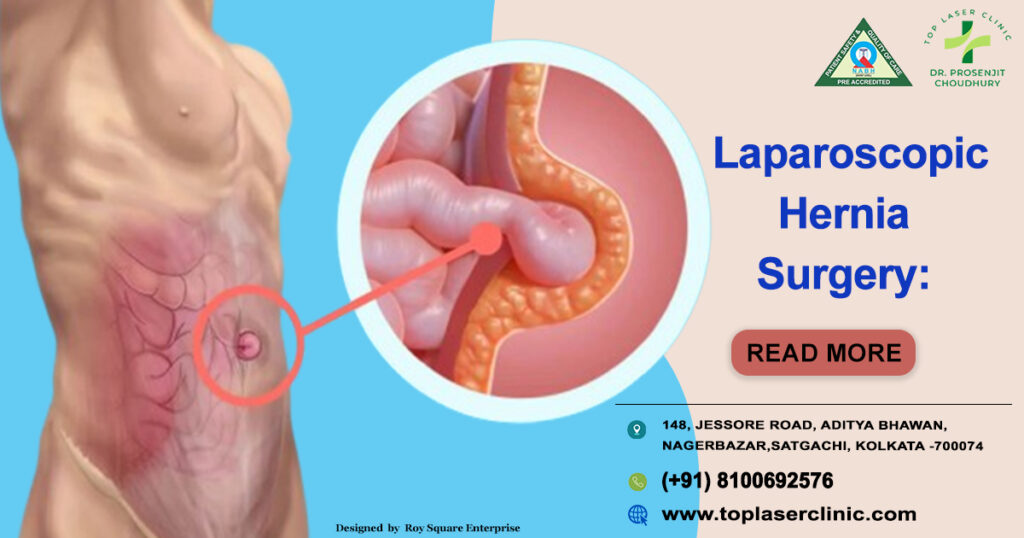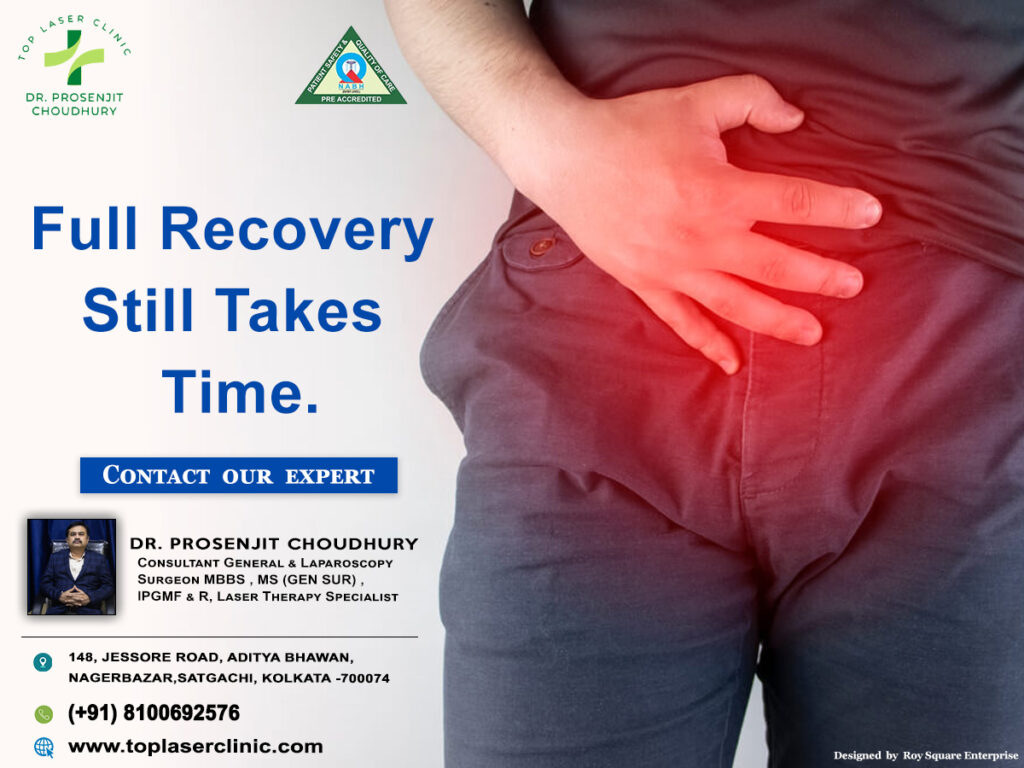Table of Contents
Hernias

Have you ever noticed an unusual swelling in your abdomen or groin area? It could be a hernia. Hernia is a condition where part of an organ or tissue swells through a weakness in the surrounding muscle or connective tissue. Hernias may seem like no big deal at first, but they can lead to serious complications if left untreated.
What Causes a Hernia?
Several factors can increase your risk of developing a hernia. These include:
• Strain from heavy lifting, coughing, or obesity, which puts pressure on the abdominal wall
• Previous surgery or injury that weakened the abdominal muscles
• Being male (hernias are more common in men)
• Genetic factors that contribute to weaker connective tissues
Common Types of Hernias
The most common types of hernias are:
- Inguinal Hernia – this type of hernia occurs in the inner groin area when the intestine or bladder swells through a weak spot in the abdominal wall. This is the most common type, especially in men.
- Femoral Hernia – They are located in the outer groin/upper thigh area near the femoral artery when the intestine pokes into the canal carrying the artery.
- Umbilical Hernia – This type of hernia occurs around the belly button area, common in infants but can affect adults too if the abdominal wall doesn’t properly close after birth or from strain.
- Hiatal Hernia – this problem occurs when part of the stomach swells up through the hiatus, an opening in the diaphragm muscle, that separates the abdomen and chest.
Symptoms and Complications
A visible swelling is often the first sign of a hernia, along with aching or a feeling of heaviness, pressure or pain that gets worse with standing or straining. Coughing, bending, or lifting can make it more noticeable.
While hernias start small, they can grow larger over time and can even get incarcerated or strangled – a serious complication where the swollen tissue gets trapped and its blood supply is cut off. This emergency requires immediate surgery.
Treatment Options
Small, painless, uncomplicated tumours should be managed using a support belt or hernia belt. It can help to reduce the pain. However, if the hernia is large or severe, surgery may be recommended to repair and strengthen the weakened muscle wall. This can be done through open surgery or laparoscopic techniques.
Various treatment options for a hernia
If you have been diagnosed with a hernia, you are in search of the best available treatment option. The good news is that several options are available depending on the type and severity of your hernia. Let’s look at the different ways inflammation canrewrap itself.
Be careful
Your doctor may recommend ongoing monitoring for small hernia growth, especially those without symptoms. This can be seen in inguinal hernias in children and can be determined when the muscles are
getting stronger.
Using a sling or hernia belt
Support pieces will not eliminate the hernia but they can help by reducing pain and keeping tissue in place. You can get rid of the symptoms of small hernias using a sling belt. It works only in case of a hernia that does not swell. Remember, it is impossible to prevent a hernia that worsens over time.
Open Hernia Repair Surgery
This traditional surgical process involves cutting into the groin or abdomen so that the tissue that has come out can return to its original position or place. The weakened area is stitched and supported with synthetic mesh or closures to strengthen the
muscle wall.
With the advancement of medical science, open hernia repair has been replaced by minimally invasive laparoscopic repair, especially for inguinal and hiatal hernias.

Laparoscopic Hernia Surgery
This laparoscopic hernia surgery requires very few openings. The
doctor can fix the unwanted growth by using a small camera and special tools to push the protruding organ or tissue into the area and secure it with a small mesh
material.
The advantages of laparoscopic hernia repair include fewer cuts, less pain and scarring, faster recovery, and a lower risk of infection in comparison with open surgery.
However, like any other surgery, there are some post-operative risks that patients should be aware of the laparoscopic surgery. This includes:
1. Being Overweight or obesity
2. Having prior abdominal surgeries
3. Getting infections at incision sites
4. Increased abdominal pressure from conditions like chronic cough or constipation
5. Lifting too soon or ignoring activity restrictions after surgery
Remember, many hernias don’t cause symptoms initially but increase in size over time. Signs can include a visible bulge or protrusion along with abdominal discomfort, nausea, or feeling of pressure when standing.
After Surgery precautions
As a patient, you can help prevent hernias by following all postoperative instructions carefully:
• Don’t lift anything heavier than advised, typically nothing over 10-15 lbs for 4-6 weeks
• Avoid strenuous exercise or abdominal strain during the recovery period
• If overweight, lose weight through a healthy diet before an elective surgery
• Stop smoking to reduce chronic coughing that increases abdominal pressure
• See your surgeon promptly if you notice any abnormal swellings or symptoms
Is laparoscopic hernia surgery painful?
One of the biggest advantages of laparoscopic or “minimally invasive” hernia surgery is less postoperative
pain compared to open hernia repairs. But is this claim backed up by patient experiences?
Let’s take a look at what you can expect in terms of pain and discomfort.
Less Postoperative Pain
Most studies comparing pain levels between open and laparoscopic hernia repairs do show significantly less
discomfort in the first few days after laparoscopic surgery. This makes sense as there is less muscle cutting and trauma involved.
Patients typically report only mild to moderate pain levels in the week following laparoscopic hernia surgery when using prescribed oral pain medication as needed.
Many can switch over to over-the-counter medicines like Tylenol or ibuprofen within 3-4 days.
In contrast, open hernia surgery patients tend to have pretty severe pain levels for the first several days thatrequire stronger prescription painkillers.
Not Entirely Pain-Free Though
While much better than open surgery, laparoscopic hernia repair isn’t completely pain-free. There can still be discomfort from the gas used to inflate the abdomen as well as pain from the mesh
being secured against nerves.
Many patients report sharp pains or pulling sensations with movement as well as general aching across the
abdomen and at cut sites in the days following laparoscopic surgery. This usually starts improving within a
week.
Full Recovery Still Takes Time

The less invasive approach means patients are typically able to go home the same day or next day after
laparoscopic hernia surgery. However, it still takes around
4-6 weeks before most people feel fully recovered in terms of pain, swelling, fatigue, etc.
Strengthening activities, heavy lifting and vigorous exercise should be avoided for one month. To avoid
re-injury or recurrence of the hernia, it is important to follow all
post-operative instructions regarding activity restrictions.
So, although the pain is less laparoscopic than open surgery, it can be difficult at first. Taking the right pain medication and giving your body enough time to rest and recover are the keys to successful laparoscopic
surgery.
Key Points
If you suspect a hernia, don’t neglect it. Get it evaluated by your doctor. Although initially not a disease, hernias do not
resolve on their own and can become very serious without proper treatment and care.